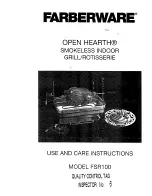
25
Tec
hnical f
eatures and dimensions
Minimum internal section Ø 130
Minimum length 30 cm
Soot container
with condensation drain
Draught limiter/adjuster
3.9 - CONNECTION TO THE
FLUE
To connect the flue gas exhaust pipe, local and national
standards must be observed.
The chimney is essential to good boiler operation: accordingly,
the chimney needs to be water-proof and well-insulated.
Old or new chimneys, built without respecting the specific
requirements, can be recovered by “piping” the chimney itself.
It will be necessary to introduce a metallic pipe inside the existing
chimney and insulate the space between the metallic pipe and
the chimney.
Chimneys made of prefabricated blocks must have perfectly
sealed joints to avoid that flue condensate smudging the walls
due to permeation.
The entrance to the chimney should be at a 45° angle.
At the base of the chimney a flue inspection opening has to be
made.
It is recommended to insulate the pipe connecting to the chimney
to reduce heat loss and noise.
The dimensions of the chimney must guarantee the draught
required to properly operate the boiler.
An insufficient draught, besides causing smoke leakage from
the generator, it considerably reduces the heat output. On the
contrary, an excessive draught causes an abnormal heat output
increase, a higher flue gas temperature in the chimney and too
much fuel consumption.
Use only exhaust pipes suitable for the type
of fuel used.
The supplier will have no contractual or extra-
contractual liability for damage caused due
to incorrect installation and use and anyway
failure to comply with the instructions provided
by the manufacturer.
It is prohibited to exhaust ALLBIOMIX
combustion products in shared smoke pipes.
The flue must comply with the standards in
force.
The flue gas chimney must be made properly
to favour the normal flow of flue gas from the
combustion chamber towards the outside in
the case of a power outage.
Remember that the elimination of excess
heat is managed optimally by the electronic
control unit.
The following are the main features of the flue gas exhaust
pipe according to that established by standards UNI 7129
and UNI 10683:
- The flue gas exhaust pipe must have airtight inspection ports;
- The minimum height of the pipe connected directly to the
flue gas exhaust is between 2-3 m;
- If a horizontal section is inevitable, it is recommended that it
be no longer than 1.5 m at most and at a gradient of 3-5%
to favour the escape of the flue gas;
-
A weatherproof terminal must be used
to avoid altering
the slight state of overpressure found in the flue (do not fit a
horizontal section at the end of the pipe);
- The exhaust ducts must be made with material resistant to
combustion products and condensation (the inspection valve
can drain any condensation which may be formed);
- Pipes must be built in such a way to guarantee maximum
smoke tightness (UNI 10683);
- It is recommended to insulate the piping, especially the
outside part exposed to foul weather.
Do not make sections fully horizontal.
There must be no flue gas exhaust hoods installed or already
existing in the room where the heat generator is installed to
avoid creating a vacuum in the environment.
It is prohibited to close the air vents.
Have the flue cleaned at least once a year; we therefore
recommend having both the chimney and the flue gas fitting
thoroughly cleaned.
Should the flue or piping catch fire,
immediately switch the boiler off and
disconnect it from the household electrical
mains.
Summary of Contents for ALLBIOMIX
Page 1: ...ALLBIOMIX INSTRUCTIONS ON INSTALLATION USE AND MAINTENANCE ...
Page 4: ...4 This page has been intentionally left blank ...
Page 10: ...10 2 2 HYDRAULIC DIMENSIONS AND CONNECTIONS ...
Page 11: ...11 Technical features 2 3 INSTALLATION OF THE BOILER AND PELLET TANK ALLBIOMIX 34 ...
Page 12: ...12 ALLBIOMIX 45 ...
Page 13: ...13 Technical features ALLBIOMIX 80 ...
Page 24: ...24 4 5 6 7 ...
Page 47: ...47 ...
















































